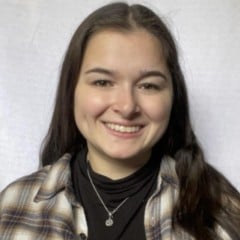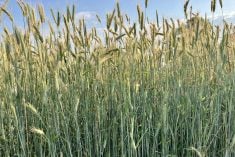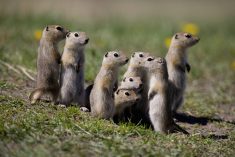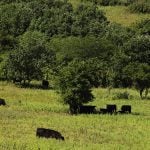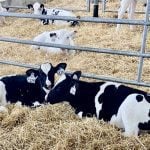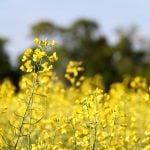Laio Silva Sobrinho’s passion is soil.
He initially got his undergrad in forestry in Brazil, but when he came to Canada to do his master’s, he knew it would be in soil science.
“Even during my undergrad, I worked with soil remediation in relation to heavy metals. So, it wasn’t too much of a change to go from that to grazing management and carbon sequestration.”
Read Also
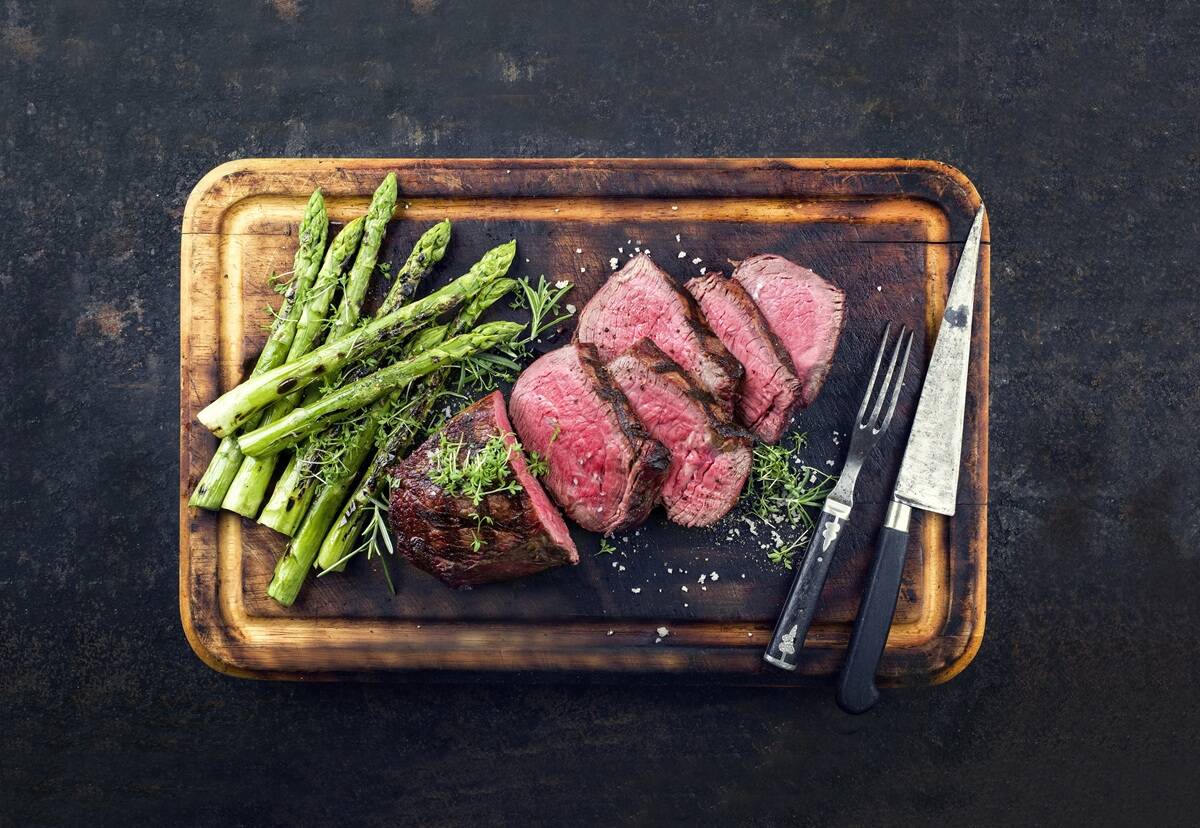
Building demand together: The impact of Canada’s beef import levy
The beef import levy has become a central tool for ensuring balance in Canada’s beef industry
Agriculture has always played a major role in his life. Sobrinho grew up on a ranch in Brazil where his family raised beef cattle. He says in some ways, agriculture in Brazil isn’t that different from Canada, but in other ways, it’s a vastly different place. For example, he says in Brazil, people are not as concerned about the productivity of their pastures because they have year-long grazing. He says grazing management is more advanced in Canada than in Brazil.
For the work Sobrinho does regarding soil science, these differences are beneficial to his work and are part of the reason he made his way to Canada to continue his education.
“When it comes to soil health and carbon sequestration here, we are much more concerned about that compared to home. So, producers overall are more aware about their impact on their land, on carbon sequestration, on ecological sustainability overall and that’s something that I enjoy a lot.”
This is one of the main things that Sobrinho loves about Canada — the advanced grazing management and the focus on soil health and carbon sequestration.
“Whenever I talk to producers, they’re very well informed. They have a good baseline of what it takes to increase productivity while being good stewards of the land.”
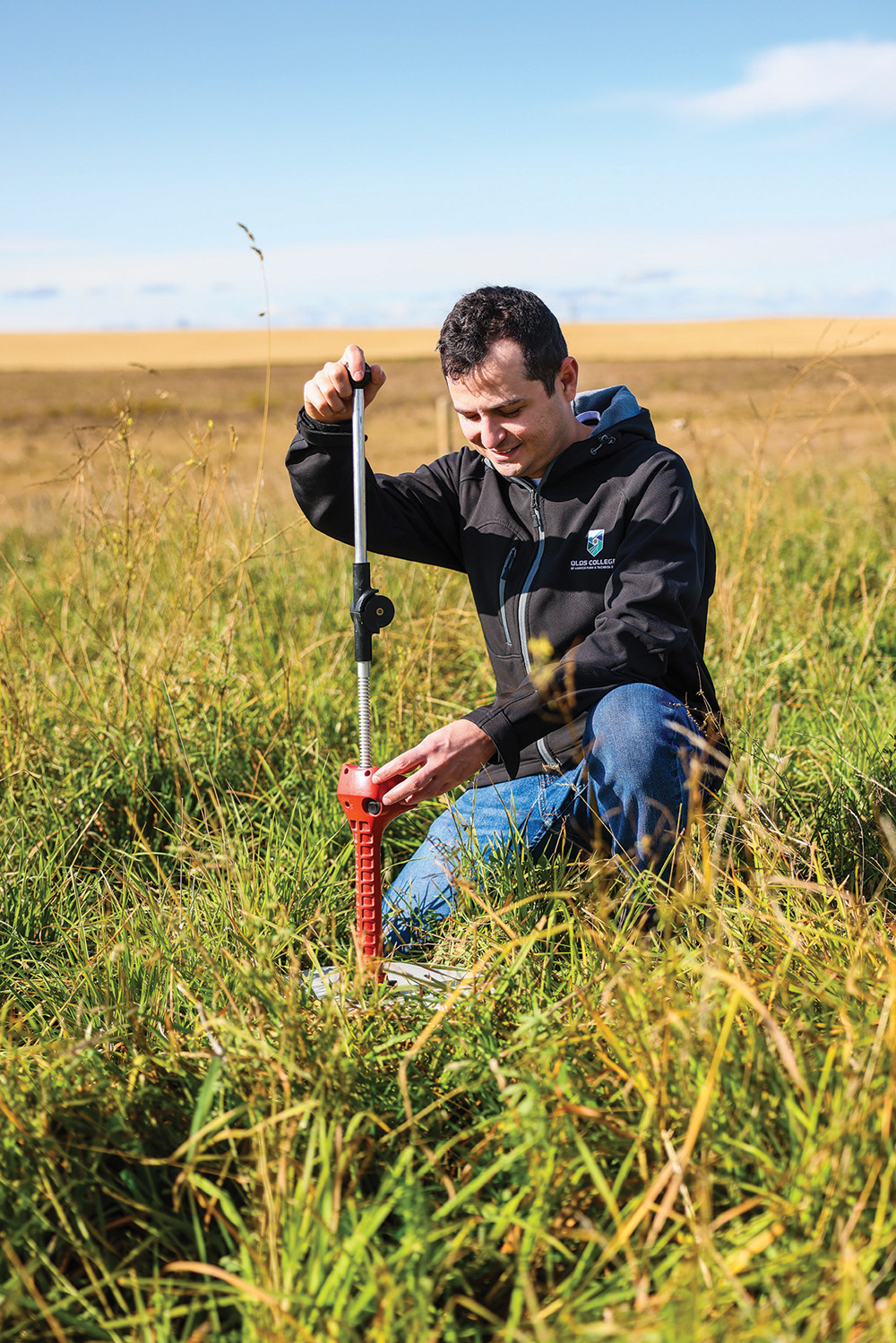
Now, Sobrinho is the research manager at the Olds College Technology Access Centre for Livestock Production. His work primarily focuses on grazing management and pasture productivity, looking specifically at soil health and environmental sustainability. He also focuses on the validation of new technologies that could help producers manage their cattle.
Rising plate metre
At Olds College, Sobrinho is trialling the rising plate metre, which helps producers estimate available pasture.
Created by the New Zealand company Jenquip, this product estimates pasture cover based on height and density. It takes approximately 30 readings in each pasture, and the average of those readings is shown on the display of the plate metre.
Sobrinho says usually a producer must guess how much grass their pastures have based on what it looks like and how many animals they have. When rotational grazing, this can be risky, because pastures need to be rested and can’t be overgrazed. Sobrinho says if a pasture is overgrazed, it might lose productivity.
There is no guesswork involved with the rising plate metre. Producers can more accurately calculate the grazing days in a given area, so producers can plan their rotational grazing,
However, it must be calibrated for pastures in different parts of the world. Right now, it’s calibrated for New Zealand, the U.S. and parts of Canada, but not Alberta.
So, Sobrinho and the researchers at Olds are working to calibrate it for Alberta.
“We started collecting samples in our pastures at the college. Last year we collected some samples from another number of properties around Olds and our objective is to increase the number of pastures over time.”
Sobrinho says it’s important to conduct this type of research because it allows producers who are rotationally grazing to effectively use their land and improve their management.
“If you don’t manage your fields very well, then you’re not actually rotationally grazing properly. You don’t have all the benefits that you should.”
Currently, there is not a specific research project that covers the rising plate metre, as it is primarily used for operational purposes. However, Sobrinho says they are looking for research funding so they can collect more samples to calibrate this technology for Alberta.
According to the Jenquip website, the rising plate metre costs NZ $1,035, or around C $853.
Satellite imagery
Olds College is also trialling satellite imagery that, like the rising plate metre, supports rotational grazing.
For this project, they are working with Wyvern, an Edmonton-based space data company that offers satellite imagery to enable precision agriculture and in-season crop monitoring.
Sobrinho says the satellites collect hyperspectral imaging, which means they process information across the electromagnetic spectrum. Objects and materials can be identified solely by their unique spectral signatures.
At Olds College, they are using this technology to estimate forage biomass availability and quantify the differences between multiple paddocks.
“Because we’re doing much more data from each area, one of the types of data that you can collect is the visual composition of the winter forages,” Sobrinho says.
At the virtual Sustainability of Canadian Agriculture Conference, Sean Thompson of Olds College presented the technology, explaining how hyperspectral imaging can create a yield map for the pasture and can convey what the estimated yield would be for that paddock.
“This essentially helps eliminate that subjectivity from visual assessment,” Thompson said.
Sobrinho says he thinks it’s effective because, for rotational grazing, it captures a larger area than the rising plate metre.
“Now, the interesting thing is when we compare both the rising plate metre to the satellite imagery, the rising plate metre has a lower error compared to the satellite, which was a bit surprising. But it just goes to show that technologies vary a lot in the way that they’re implemented and also their accuracy.”
He says whichever technology producers would choose to use depends on their willingness to implement technology. Satellite imagery is more difficult to learn because you must know about geographic information system software, whereas the rising plate metre is more straightforward.
The Technology Access Centre for Livestock Production received $440,000 in funding for this research from the Natural Sciences and Engineering Research Council of Canada.
Soil biologicals
Another research project underway at Olds College is regarding soil biological additives from the company AdvancedAg. Their product, which is used to improve soil, consists of five bacteria types, called ACF-SR. It includes bacteria such as Rhodopseudomonas palustris, which enhances soil bioactivity and nitrogen fixation; Bacillus licheniformis, which enhances soil bioactivity and provides plant growth hormones; Notrosomonas Europaea, which converts ammonia to nitrate and solubilizes phosphates; Nitrobacter winogradskyi, which converts nitrite to nitrate and solubilizes phosphates; and Bacillus subtilis, which solubilizes phosphates and siderophore production.
Sobrinho says the additives increase nutrient availability in the soil.
“They help plants with vital hormones. They also make it easier for plants to go through drought periods and other adverse conditions, such as high salinity in the soil. There are many benefits.”
They are testing this product on forage crops to see if it improves soil and crop yields in a three-year study.
Sobrinho says they have control areas where they aren’t applying any of the product and that they are comparing to the treatment areas. Researchers are applying the treatment at four gallons an acre with a sprayer, twice a season. Then, they collect samples to calculate productivity, how much biomass is available and the nutritional value of the treatment group versus the control group.
“We collected soil samples in the first year of the project… and then we’re going to also look at the effect of using this product on overall soil health.”
Sobrinho says they will have results to share after this growing season when they compile all the data from the three years of the study.
He says there has been a lot of interest in this product from producers because it might reduce fertilizer use. Applying the soil biological additives is fairly cheap compared to fertilizer. Other potential benefits include increased productivity and drought resilience.

